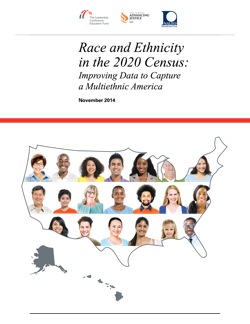New report supports ending prison gerrymandering, improving Census accuracy
Recent report focusing on the Census' methods of collecting and tabulating race and ethnicity data addresses prison gerrymandering.
by Aleks Kajstura, November 19, 2014
 Prison gerrymandering was one of the issues addressed in a recent report from The Leadership Conference Education Fund, Asian Americans Advancing Justice | AAJC, and the NALEO Educational Fund, Race and Ethnicity in the 2020 Census: Improving Data to Capture a Multiethnic America. The report focuses on the Bureau’s current and proposed methods of collecting and tabulating race and ethnicity data.
Prison gerrymandering was one of the issues addressed in a recent report from The Leadership Conference Education Fund, Asian Americans Advancing Justice | AAJC, and the NALEO Educational Fund, Race and Ethnicity in the 2020 Census: Improving Data to Capture a Multiethnic America. The report focuses on the Bureau’s current and proposed methods of collecting and tabulating race and ethnicity data.
As the Census Bureau moves towards 2020, and is likely to use more administrative records, one of the report’s 17 recommendations calls for the U.S. Office of Management and Budget to lead an effort to improve correctional facilities’ administrative records:
OMB should convene a working group of experts from the Census Bureau, Department of Justice, state correctional departments, prison reform advocates, and other knowledgeable civil rights stakeholders, to evaluate the quality of race and ethnicity data on the incarcerated population and to recommend ways to improve the accuracy, completeness, and consistency of these data.
For more information on the Census Bureau’s data collection practices in correctional facilities, see my analysis of the Bureau’s “Ethnographic Study of the Group Quarters Population in the 2010 Census: Jails and Prisons”.



